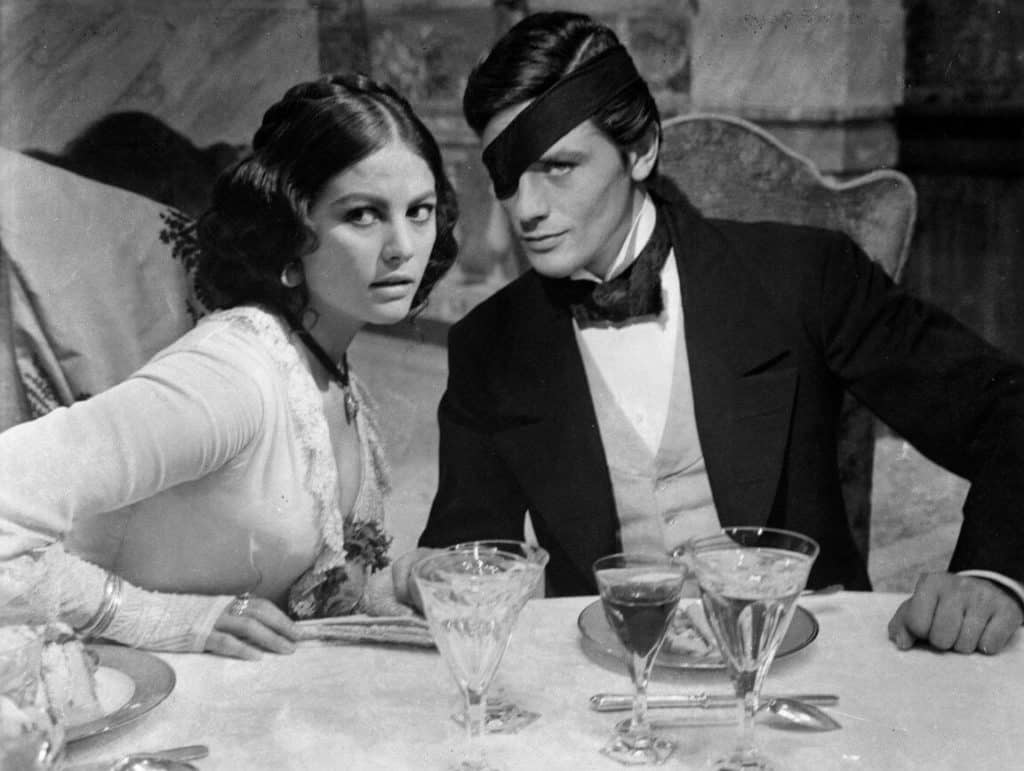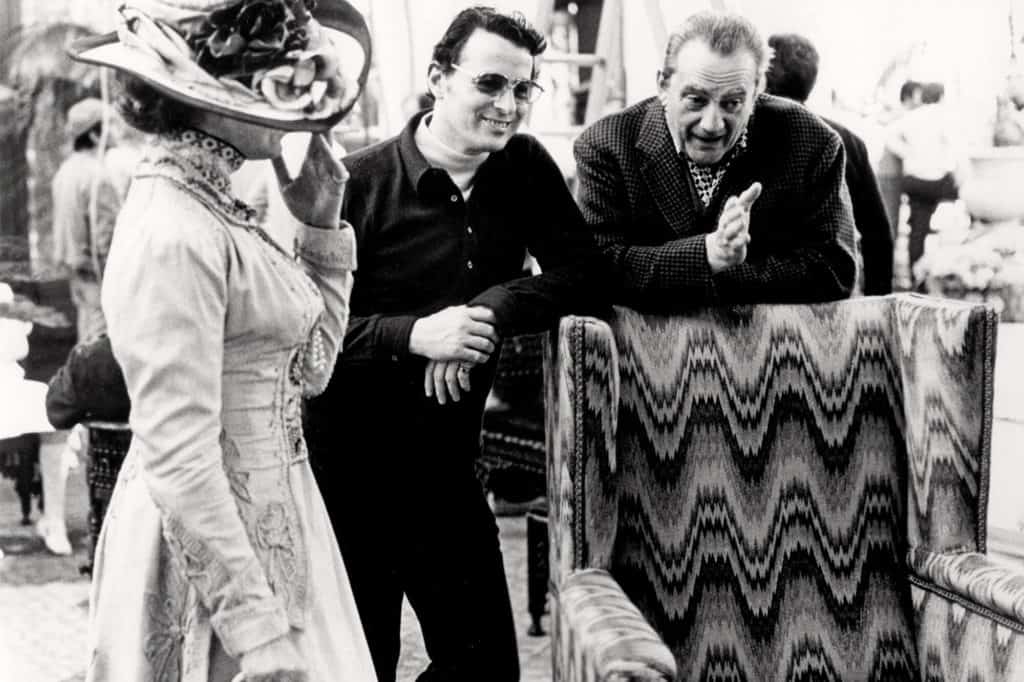An alchemical genius
Corseted wasp waists, caged crinolines, buttoned up bodices and lace headdresses. The final 45 minutes of director Luchino Visconti’s epic 1963 film Il Gattopardo (The Leopard) surround us with the incredible magic of costume designer Piero Tosi as he makes 1860s Palermo stylishly immortal.
Staged in the candlelit Palazzo Valguarnera Gangi, a gorgeous Baroque palace in the centre Palermo, Il Gattopardo’s nearly hour-long final act is a period celebration of Italian finery. Critic Derek Malcolm described the scenes as “a set piece that has rarely been equaled.” The scene took Visconti one entire month to film and required 400 costumes with each of the 50 ball gowns, 200 tuxedos and uniforms and 50 liveries, and every element entirely unique- all accurately and authentically created by Tosi.
Hamish Bowles called Tosi “an alchemical genius with “fetishistic attention to period detail”. And he was absolutely correct. Tosi (1927- 2019) was an obsessive perfectionist said to have slept with pieces of fabrics to “listen” to them at night, before deciding which one to choose and how to shape the costume.
Born in Sesto Fiorentino in Tuscany in 1927, Tosi worked as apprentice to his blacksmith father before studying costume design at the Academy of Fine Arts in Florence. His friend Franco Zeffirelli changed his life forever when Zeffirelli introduced him to Visconti where Tosi would join world of theatre as assistant director of Visconti’s Maggio Musicale Fiorentino before embarking on a career in film. His 58-year tenure saw Tosi teaming up with directors of equally fervent passion- Visconti, Vittorio De Sica, Pier Paolo Pasolini, Zeffirelli among others. But it would be Il Gattopardo that defined Tosi’s career.
Immortalising 1860s Palermo
The 1958 novel by aristocrat Giuseppe Tomasi di Lampedusa eulogises the decline of the ruling class during Italy’s Risorgimento – the culmination of unification of the Italian city-states in the 1860s, and chronicles the fortunes and failures of Prince Fabrizio Salina and his family. Luchino’s film, touted as one of his best, nostalgically parallels the drama and opulence of the tumultuous years of Italy’s Risorgimento. Its cast was made up of the faces of 1960s Hollywood – Prince Salina, played by American actor Burt Lancaster, Alain Delon as his war hero nephew Tancredi and the indimenticabile Claudia Cardinale as his beautiful fiancé, Angelica.
To recreate the vestiary movida of 1860s Palermo, Visconti’s film called for more 2000 costumes – from the lavish silk dresses and primped waistcoats of the nobility to shepherds and peasants frocks and military uniforms. Tosi teamed up with tailoring house Umberto Tirelli Tirelli Costumi, while also working side by side with the meticulous Visconti whose fixation for historical accuracy and detail meant he too was hands on in the process- studying shapes and silhouettes, choosing colours, and reviewing fabric and samples.

From protagonisti (main characters) to comparse (extras), Tosi created every single element of clothing and each piece was unique. Palermitano aristocracy was dressed in custom haute couture from Paris, which sent Tirelli all over Italy to source old laces and vintages taffetas and fabric. For Cardinale’s ball gown, Tosi chose a refined organza by Dior, supported by twelve layers of tulle, and constricted her voluptuous figure from 68 cm waist to 53-54 cm. She kept a hand-embroidered handkerchief in her pocket. Cardinale famously shared that the authentic whalebone corsetry was so excruciatingly tight, she was exhausted, bruised all over and unable to sit down.
Tosi’s costumes were impeccably detailed and exquisite, leading many to incorrectly assume they were actual period clothing. Instead, his costumes were meticulous recreations that came from research and more research. In fact, Tosi once said that “a costume designer’s work is from story and culture” and was more similar to “reconstruction rather than design”. For a glimpse at Tosi’s fidelity toward tradition and authenticity, one only needs to freeze frame on any of Il Gattopardo’s military characters. As military garb of that era was often a hodgepodge of shirts and trousers made by a mother, grandmother, sister or girlfriend, Tosi coordinated a team of ten different dressmakers to produce 300 shirts each uniquely styled, shaped and detailed in hand-embroidery, collars, colours and fabric.
The result? A sartorial time warp and epic masterpiece.
Tosi was nominated for five Academy Awards for The Leopard, Death in Venice (1971), Ludwig (1973), La Cage aux Folles (1978), La Traviata (1982), and received an Honorary Academy Award in 2014. He received the BAFTA for Death in Venice and La Traviata, and the Davide di Donatello for The Lady of the Camellias (1981) and Sparrow (1993).
